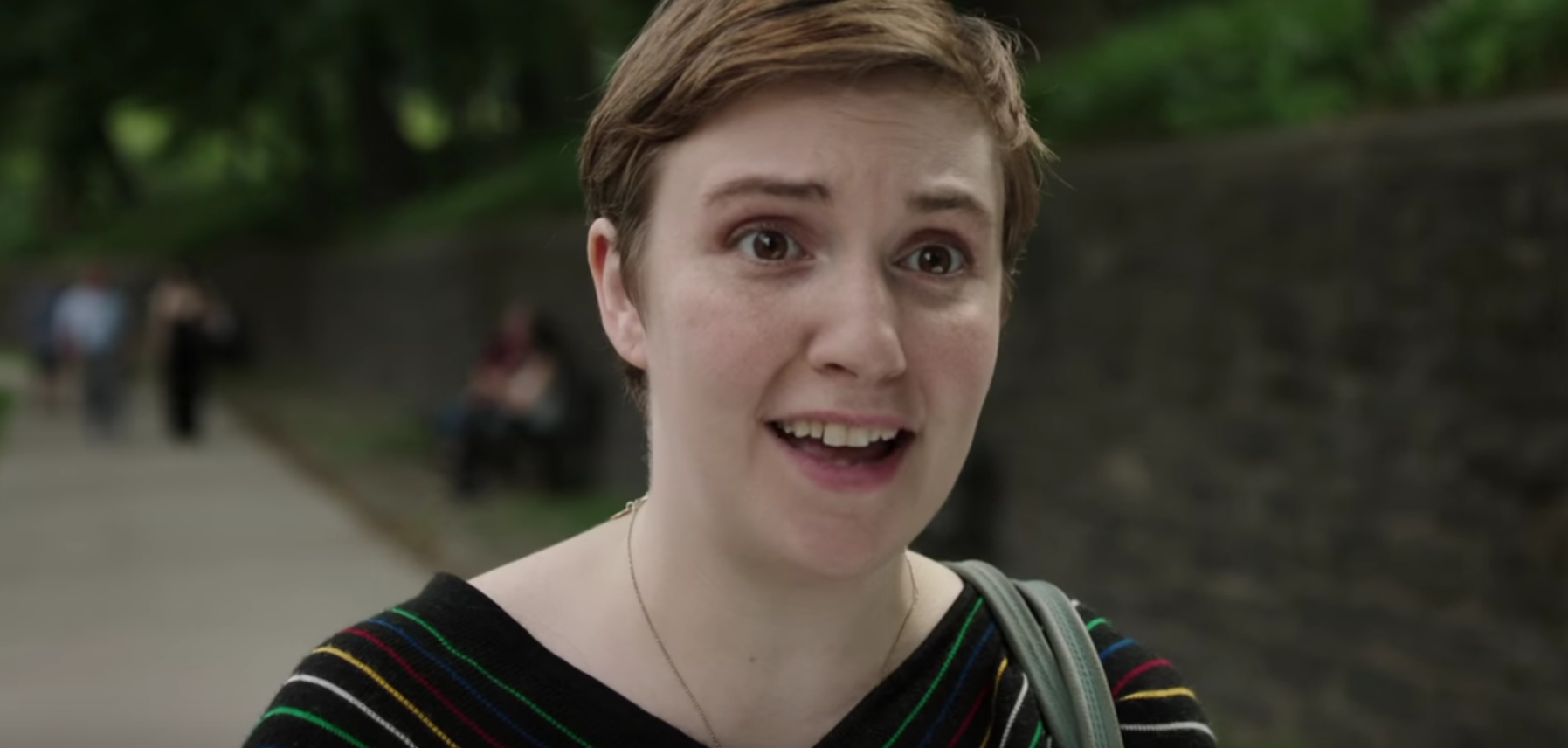By Amanda Eisenberg
For The Diamondback
“I am 13 pounds overweight, and it has been awful for me my whole life,” bemoans Hannah (Lena Dunham) in the first season of Girls. In the four years since, she has “gained and lost a total of 33 pounds” and contracted “not one, but two strains of HPV,” but change may be coming for one of the most controversial characters in recent TV history.
The HBO show, which just ended its fifth season on Sunday, has finally given fans the payoff they’ve been begging for: The girls are growing up.
Season five is highly self-aware, a trend that elevated the jokes on a show that tends to elicit more winces than laughs. Instead of covering your eyes, you’re covering your mouth to stifle belly laughs — a change in tone for the 30-minute dramedy.
Girls‘ latest season began with a wedding that establishes nothing has changed since the last season: Hannah is still selfish as ever, sneaking off to have sex with her new boyfriend Fran (Jake Lacy), while Marnie (Allison Williams) is a bridezilla who aspires to look like a cross between Ralph Lauren and Joni Mitchell on her wedding day. Marnie tells her makeup artist that she wants to look “artistic but also with a nod to my cultural heritage, which is ‘white Christian woman.'”
And with that, the premiere depicted every stereotype of a millennial, Insta-worthy wedding and acted as a strong parody for the current cultural landscape. It also set a precedent for how Girls would play out, with 10 phenomenal episodes that have propelled the characters toward self-actualization in its sixth and final season.
For fans who stuck through the show’s past three seasons, standout episodes were few and far between. Despite some stellar cameos, the last great episode prior to season five was “Beach House” in season three. It seemed to say exactly what Girls viewers were thinking about the characters: You are all so horrible. How are we even friends? Its self-awareness gave viewers a sense of relief, knowing they weren’t the only ones who thought this. It also sparked think pieces on the likability of women on TV.
Beyond objections to Dunham’s size-12 body and the numerous sex scenes it’s featured in, many critics and fans argued that the show elicited hate-watching because the characters are so unbearable. And this is coming from a show that had two of its four stars make The Atlantic‘s Actual Worst bracket; Marnie cracked the Elite Eight, along with Game of Thrones‘ Joffrey and Breaking Bad‘s Walt.
Season five takes that tone not only to satirize its characters, but also to remind us of how much they have evolved.
Jessa (Jemima Kirke), having survived a marriage, divorce, rehab, relapses and several jobs, may have finally found her calling: psychology. She attends Alcoholics Anonymous meetings and is studying to become a therapist. For once, she is stable — until she finds a spark with Adam (Adam Driver), Hannah’s ex-boyfriend. Their budding relationship, despite Jessa’s valiant attempts to avoid Adam — she says, “I know that I have principles, and one thing I don’t do is steal people’s boyfriends,” — fully evolves by the end of the season. But from their first kiss at Marnie’s wedding, it just makes sense for them to be together. The show had been leading up to the pairing for a while, and setting up the two addicts together creates a real, possibly lasting intimacy that hasn’t been explored in the show. They don’t ignore how volatile it is, either, which Hannah aptly describes when she says, “I don’t know who to warn about the other one.”
The fiery passion between Jessa and Adam reaches its peak during a disastrous apartment fight, leading to the funniest moment of the season finale. Their relationship also serves to the disintegrating relationship between Fran and Hannah.
Fran, a teacher at the same school where Hannah works, is the anti-Adam; he’s kind and stable a nice guy. The show excelled this season by looking at the nice-guy trope and flipping it on its head in the same way that Netflix’s Love, Judd Apatow’s other show, does with its main character, Gus. Both shows look at someone who is perceived as a nice guy but is actually super controlling and mistakes their niceness for passive-aggression.
By showing Hannah in what she thinks is a healthy relationship that really isn’t, she is able to find out what she needs. Girls, familiar with gender experimentation, seems to flip the manic pixie dream girl trope this season, having men designated to help shape and change the girls to their full potential.
Possibly the best journey depiction of this season though comes from Marnie in “The Panic in Central Park.” A night romping around the city with ex-flame and former fan favorite Charlie (Cristopher Abbott) makes her reconsider her relationship with husband Desi (Ebon Moss-Bachrach).
Charlie is a radically different person than she (and the viewers) are used to seeing. He has gained some weight and has a rough-and-tough accent but is still just as sweet and a bit more exciting. Their coming together speaks to those who had been in love, the idea that this person will always be in your life, even if you might not see or hear from them.
By the end of the night, Marnie’s fairytale abruptly shatters when she finds a heroin needle that Charlie lazily dismisses as his diabetes needle. However, it gives Marnie some closure on this relationship. It’s because of this night that Marnie comes home to announce she wants a divorce; she doesn’t know what she wants but knows Desi isn’t it. Now, she wants Ray (Alex Karpovsky), which sets up a new dynamic leading into season six as they balance Marnie’s work relationship with Desi.
For Shoshanna (Zosia Mamet), self-actualization occurs at her job in Japan. Upon an untimely homecoming, she proves she is capable of being someone who can be successful in the workplace by rebranding Ray’s coffee shop. While her character arc isn’t as complex as the other girls, her wardrobe assists her newfound self-confidence.
The show also used the girls’ wardrobes this season to tell the audience exactly how they are feeling and thinking without any dialogue, a credit to costume designer Jenn Rogien.
Marnie is seen most of the season in sweats, a huge inversion of how put-together she’s looked in prior seasons; Jessa starts to wear jeans and T-shirts in favor of her flowy jumpsuits to depict a more structured version of herself.
Maybe next season Hannah will finally wear something that fits her, and for the first time, we can’t wait to see it.



